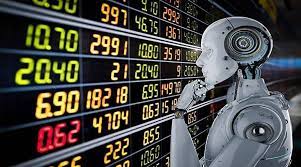
In the ever-evolving landscape of financial markets, technological advancements have continually disrupted traditional trading paradigms. Among these innovations, Forex robots stand out as a groundbreaking tool reshaping the way traders engage with the foreign exchange market. These automated systems, powered by forex robot algorithms and machine learning capabilities, have garnered considerable attention for their potential to enhance trading efficiency, mitigate risks, and unlock new avenues of profitability. In this article, we delve into the world of Forex robots, exploring their functionality, benefits, and implications for traders.
Understanding Forex Robots:
At its core, a Forex robot, also known as an expert advisor (EA), is a software program designed to execute trades on behalf of traders based on pre-defined criteria and algorithms. These criteria can range from simple technical indicators to sophisticated mathematical models, allowing the robot to analyze market conditions and make trading decisions autonomously. Unlike human traders, Forex robots operate without emotions, biases, or fatigue, enabling them to execute trades with precision and consistency.
Benefits of Forex Robots:
- 24/7 Trading: Forex robots can operate round the clock, taking advantage of trading opportunities across different time zones and market sessions. This eliminates the limitations imposed by human traders’ availability and ensures continuous monitoring of the market.
- Elimination of Emotional Bias: Emotions such as fear, greed, and hesitation often cloud traders’ judgment, leading to impulsive or irrational decisions. Forex robots operate purely based on programmed algorithms, eliminating emotional biases and enhancing decision-making accuracy.
- Speed and Efficiency: With the ability to analyze vast amounts of data and execute trades within milliseconds, Forex robots capitalize on fleeting market opportunities that may elude manual traders. This speed and efficiency are crucial in fast-paced markets where every second counts.
- Risk Management: Many Forex robots incorporate advanced risk management techniques, such as stop-loss orders and position sizing algorithms, to protect capital and minimize losses. By adhering strictly to predefined risk parameters, these robots help traders maintain discipline and avoid catastrophic drawdowns.
- Backtesting and Optimization: Before deploying a Forex robot in live trading, traders can backtest its performance using historical data to evaluate its effectiveness and fine-tune its parameters. This process enables traders to optimize the robot’s performance and validate its profitability before risking real capital.
Challenges and Considerations:
While Forex robots offer compelling advantages, they are not without limitations and considerations:
- Market Volatility: Extreme market conditions or unexpected events can pose challenges for Forex robots, as they may struggle to adapt to rapidly changing dynamics or unusual patterns. Traders must monitor their robots closely and intervene when necessary to mitigate potential risks.
- Over-Optimization: Excessive optimization of a Forex robot’s parameters based on historical data can lead to overfitting, where the robot performs exceptionally well in backtests but fails to generalize to live market conditions. Traders must strike a balance between optimization and robustness to ensure the robot’s reliability in real-world trading.
- Dependency on Market Conditions: Certain Forex robots may perform exceptionally well in specific market environments but struggle in others. Traders should select robots that align with their trading preferences, risk tolerance, and market conditions to maximize profitability.
- Technological Risks: Like any software program, Forex robots are susceptible to technical glitches, connectivity issues, or cyber threats that can disrupt their operation. Traders must implement robust cybersecurity measures and regularly update their robots to mitigate these risks.
The Future of Forex Trading:
As technology continues to evolve, the role of Forex robots in shaping the future of trading is poised to expand further. Advances in artificial intelligence, machine learning, and big data analytics will enable Forex robots to become more intelligent, adaptive, and predictive. Additionally, the rise of decentralized finance (DeFi) and blockchain technology may introduce new opportunities for algorithmic trading and automated asset management.
In conclusion, Forex robots represent a paradigm shift in the way traders approach the foreign exchange market, offering unparalleled efficiency, precision, and scalability. While challenges and risks persist, the potential rewards of incorporating Forex robots into trading strategies are substantial. By harnessing the power of automation and technology, traders can unlock new levels of profitability and competitiveness in the dynamic world of Forex trading.